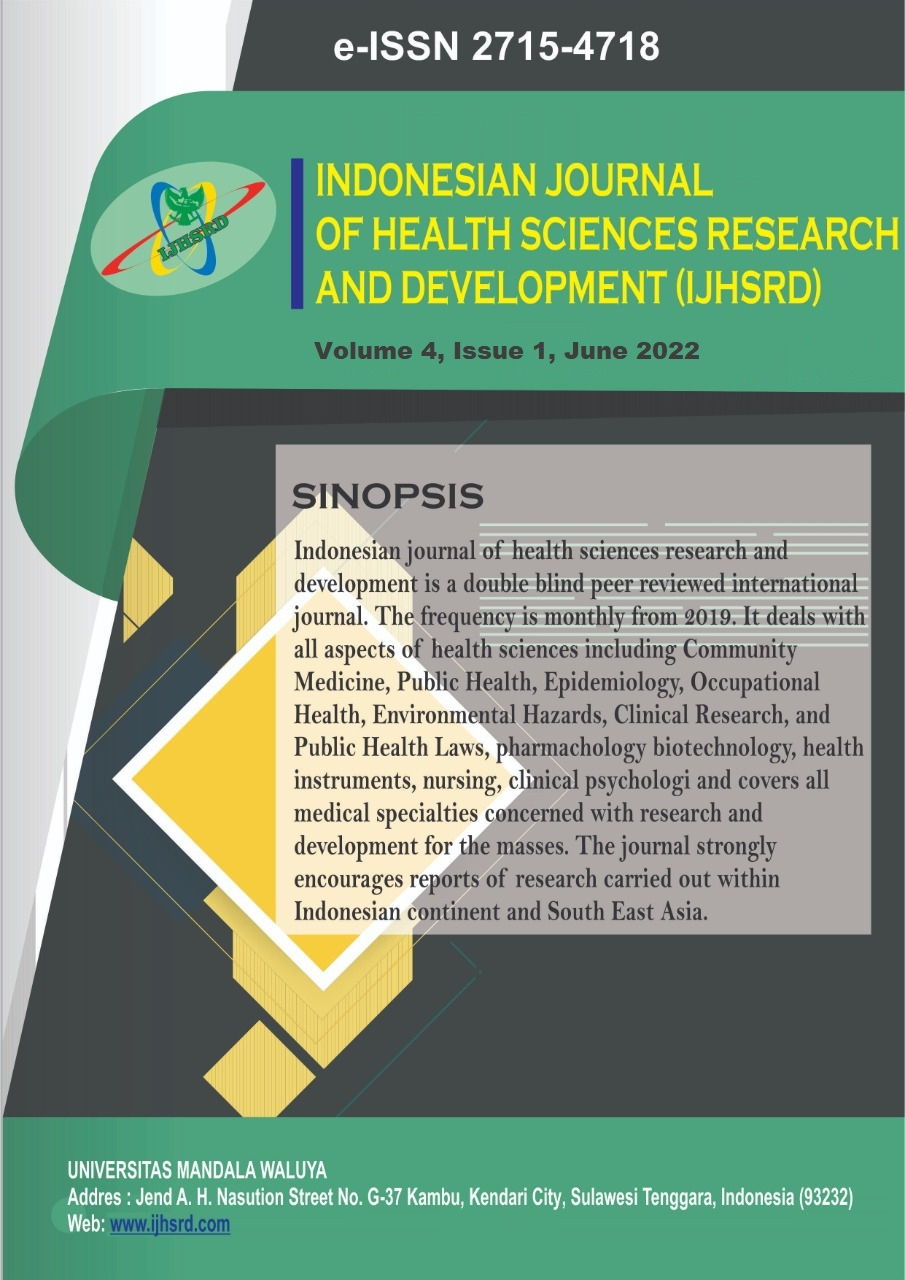Main Article Content
Abstract
Background: World health organization (WHO) rules in the beginning six month the child should be given breast milkonly, so mothers coming back to work should have a good knowledge about appropriate expression of breast milk. The main goal of the research was to determine knowledge and attitude toward expressed breast milk among working mothers in Harari region, Ethiopia, 2021
Methods:A cross-sectional study was done on 385 employed mothers for analysis of data SPSS 22 used.
Results: Over all knowledge and attitude about expressed breast milk were 36% and 44%respectivly.
Conclusion: the study showed there was knowledge gap in the expressing and storing of breast milk. More exertion is essential to be done by the health professionals ineducating mothers on way of expression, storing and timings of storage of expressed breast milk of breast.
Keywords
Article Details

This work is licensed under a Creative Commons Attribution-ShareAlike 4.0 International License.
References
- WHO. Global targets indicators. WHO. 2018.
- WHO & UNICEF. Global Nutrion Target 2025. Breastfeeding policy brief. WHO/MNH/NHD14.7. WHOLibr Cat Data [Internet].2014
- World Health Organization. 2009. Infant and young child feeding: model chapter for Textbooks for medical students and allied health professionals. Geneva: World Health Organization.
- Labiner-Wolfe J, Fein SB, Shealy KR, Wang C. Prevalence of breast milk expression and associated factors. Pediatrics. 2008; 122(Suppl 2):S63–68. [PubMed: 18829833]
- National Bureau of Statistics Nairobi K, KNBS. Key Indicators 2014 Kenya Demographic and Health Survey.2015
- Edemba, Priscillah & Irimu, Grace &Musoke, Rachel. (2020). Knowledge Attitudes and Practice of Breast Milk Expression and Storage Among Working Mothers With Infants Under 6 Months of Age in Public Well Baby Clinics. 10.21203/rs.3.rs-67599/v1.
- International Labour Organization. Convention C183 - Maternity Protection Convention, 2000 (No. 183). 2000
- Ahluwalia IB, Tessaro I, Grummer-Strawn LM, MacGowan C, Benton-Davis S. Georgia’s breastfeeding promotion program for low-income women.Pediatrics. 2000;105(6):e85
- Madhu K, Chaudhary S, Masthi R. Breast Feeding Practices and Newborn Care inRural Areas: A Descriptive Cross SectionalStudy.IJCM;2009, 34(3): 243-46
- Kimani-Murage EW, Wekesah F, Wanjohi M, Kyobutungi C, Ezeh AC, Musoke RN, et al. Factors affecting actualisation of the WHO breastfeeding recommendations in urban poor settings in Kenya. Matern Child Nutr. 2015 Jul;11(3):314-32. doi: 10.1111/mcn.12161. Epub 2014 Dec 17. PMID: 25521041; PMCID: PMC6860346.
- Win N, Binns CW, Zhao Y, Scott JA, OddyWH. Breastfeeding duration in mothers who express breast milk: A cohort study. International Breastfeeding Journal.2006; 1(28).
- Gaikwad AB. Assess the effectiveness of information booklet on knowledge andpractices of expressed breast milk among postnatal working mothers in selected hospitals of Tumkur City. Obstetrics and Gynecological Nursing. 2011;16(2).
- Ismail T, Sulaiman Z, Jalil R, Muda W, Man N. Breast milk expression among formally employed women in urban and rural Malaysia: A qualitative study. International Breastfeeding Journal. 2012; 7(1):11.
- Col-ArazN, Aydin N, Tasdemir H, Parlar- Kilic S. Breast milk expression knowledge of school of medicine and faculty of health sciences students. Journal of Nursing Education and Practice. 2013;3(10):19-25
- Hernandez J, Lemons P, Lemons J, ToddJ. 977 effect of pasteurization and freezing m the bacterial growth inhibiting activity of human breast milk. Pediatric Research.1978;12:526-526.
- Martı´nez-Costa C, Silvestre MD, Lo´pezMC, Plaza A, Miranda M, Guijarro R. Effects of Refrigeration on the bactericidal activity of human milk: A preliminary study. Journal of Pediatric Gastroenterology and Nutrition. 2007;45(2):275-277.
